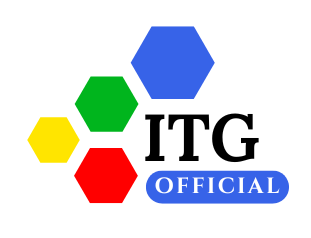introduction
In 2025, SEO is no longer just about ranking for keywords—it’s about understanding user intent, optimizing site performance, and staying updated with the latest SEO techniques 2025. Search engines like Google are constantly evolving, and so should your strategies. Whether you’re a blogger, business owner, or digital marketer, implementing modern SEO methods is crucial for online visibility.
To explore more practical tips and digital marketing insights, visit our main site at ITG Official—your hub for SEO, content strategy, and digital growth.
1. Understand Searcher Needs and Enhance Page Experience
Today’s SEO goes beyond keywords—it focuses on addressing user needs.Understand search intent (informational, navigational, transactional) and tailor your content accordingly. Use tools like Google Search Console and AnswerThePublic to analyze what users are really looking for.
2. Optimize for Google SGE (Search Generative Experience)
With the integration of AI in search, Google is displaying AI-generated answers. To appear in SGE, use structured data, concise answers, and bullet points. This is one of the most significant latest SEO techniques 2025 to adopt.
3. Core Web Vitals and Page Experience
Google continues to prioritize user experience. Verify that your website aligns with Core Web Vitals standards.
LCP (Largest Contentful Paint) under 2.5 seconds
FID (First Input Delay) under 100 ms
CLS (Cumulative Layout Shift) under 0.1
Leverage platforms like PageSpeed Insights and GTmetrix to track and boost your website’s performance.
4. Use AI-Enhanced SEO Tools
SEO tools powered by artificial intelligence can now help you identify keyword opportunities, optimize on-page content, and build backlinks. Popular AI tools in 2025 include Surfer SEO, Frase.io, and Scalenut. These tools are game-changers in implementing the latest SEO techniques 2025.
5.Voice Search Optimization
With the rise in smart speakers and mobile usage, optimizing for voice search is more important than ever. Use long-tail, conversational keywords and structure your content to answer direct questions.
Example:
“How to rank a website in 2025?” → Create a paragraph that answers this clearly.
6. E-E-A-T Optimization (Experience, Expertise, Authoritativeness, Trust)
Google now evaluates content quality based on E-E-A-T. Add author bios, cite credible sources, and get backlinks from authoritative websites. Build your brand as a trusted expert in your niche.
7. Visual SEO: Use of Infographics, Videos & Alt Text
Multimedia content increases engagement. Use infographics, images, and videos to explain complex topics. Don’t forget to use your focus keyword as image alt text—in this case:
Alt text: latest SEO techniques 2025 infographic
8. Topic Clusters and Internal Linking
Move away from isolated blog posts. Create topic clusters: one pillar page (main topic) and several cluster pages (related subtopics). Use internal links to connect them. This helps search engines understand your site structure and boosts rankings.
9. Mobile-First SEO
Google uses mobile-first indexing, meaning it ranks your website based on its mobile version. Make sure your site is responsive, loads fast on mobile, and offers a smooth experience.
10. Zero-Click Content Strategy
Google often answers questions directly in SERPs, reducing clicks. Create zero-click content by answering FAQs within your content, using schema markup, and appearing in featured snippets.
Conclusion
The SEO world in 2025 is dynamic, fast-paced, and AI-influenced. To remain visible and competitive, marketers must evolve with the times. By implementing these latest SEO techniques 2025, you’ll not only improve your rankings but also provide real value to your users. Focus on quality, intent, and innovation—Google rewards all three.
Quick Recap of Latest SEO Techniques 2025:
Understand and match user intent
- Create zero-click content
- Understand and match user intent
- Optimize for Google SGE
- Improve Core Web Vitals
- Use AI-powered SEO tools
- Focus on voice search optimization
- Strengthen E-E-A-T
- Use alt text and visual content
- Build topic clusters and link internally
- Prioritize mobile-first design


